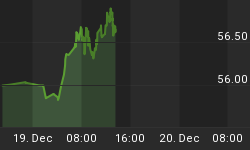With 97% of the US population currently under a stay-at-home or shelter-in-place order, this could be the best time for spring cleaning and small renovation projects, but for home sellers, it’s not a good time to sell. COVID-19 has put the residential real estate market on pause. Home-buying platform Haus estimates a 35% to 45% drop in home sales over the next three months, and as much as a 50% drop in single-family building permits for the rest of the year.
“…our models suggest the housing market recovery is likely to take the form of a flying W, with an initial sharp drop this spring, a noticeable rebound in the summer followed by another dip in the fall, and finally, a stable road to recovery by spring 2021,” Haus chief economist Ralph McLaughlin wrote.
Since the start of the pandemic, new home listings have witnessed a steep drop.
Zillow reported that the number of newly listed homes during the first week of April was down 27% compared to the same time a year ago. The effects were more dramatic in certain areas such as New York City, where new listings were down nearly 57% year-over-year.
According to the National Association of Realtors (NAR), home sales were down by around 9% in March. But even that is an optimistic figure since many of those sales represent contracts closed earlier in the year.
NAR's chief economist, Lawrence Yun, agrees with McLaughlin. He told CNBC in an interview that home sales could drop by as much as 40% in the coming months.
Mortgages are definitely cheaper, but it is also harder to get one.
While the average rate on the 30-year fixed mortgage has fallen to a new low of 3.43%, lending is getting stricter. JPMorgan Chase, the country’s largest lender by assets, has raised its borrowing standards, for instance. According to the amended rules, customers applying for a new mortgage will need a credit score of at least 700 and will be required to make a down payment equal to 20%. Several nonbank lenders are also raising minimum credit scores for Federal Housing Administration (FHA) loans.
Wells Fargo, the nation’s largest mortgage lender by volume, temporarily suspended its purchasing of nonconforming loans from correspondent sellers.
As a result, the nationwide volume of mortgage applications for loans used to purchase homes was down 24% compared with a year ago. At the same time, the volume of refinancing applications was 168% higher than a year ago.
As for prices, no one predicts big losses for home values in line with the financial crisis a decade ago when home values fell as much as 50% and the US housing market lost nearly $9 trillion by 2010.
Related: Pandemic Puts Final Nail In Brick-And-Mortar Coffin
During the pandemic, there is clearly no panic selling, despite the uncertainty in the overall economy.
In early March, median list prices were up 4.4% annually on average, but in early April they were up just under 1%. That represents the slowest growth in seven years.
The fact remains, we’re still seeing a housing shortage, which means that sellers are still likely to win in a scenario in which they manage to sell at all. In fact, 2020 could see record-high gains.
“I project the national median home price to increase 1.3% for the year, though there will be local market variations and the upper-end market will likely experience a reduction in homes price,” Yun said.
Even Fannie Mae is on board with this. Despite slipping demand for housing and a massive jump in unemployment, Fannie Mae predicts that home prices will continue to grow throughout 2020 and 2021, estimating that median new home prices will increase from $321,000 in 2019 to $326,000 in 2020, further hitting $330,000 in 2021. And for existing homes, the prediction holds true as well, eyeing an increase from $272,000 in 2019 to $275,000 this year and $279,000 next year.
That’s despite its prediction that total home sales could slip by up to $14.7 in 2020.
By Charles Benavidez for Safehaven.com
More Top Reads From Safehaven.com:
















